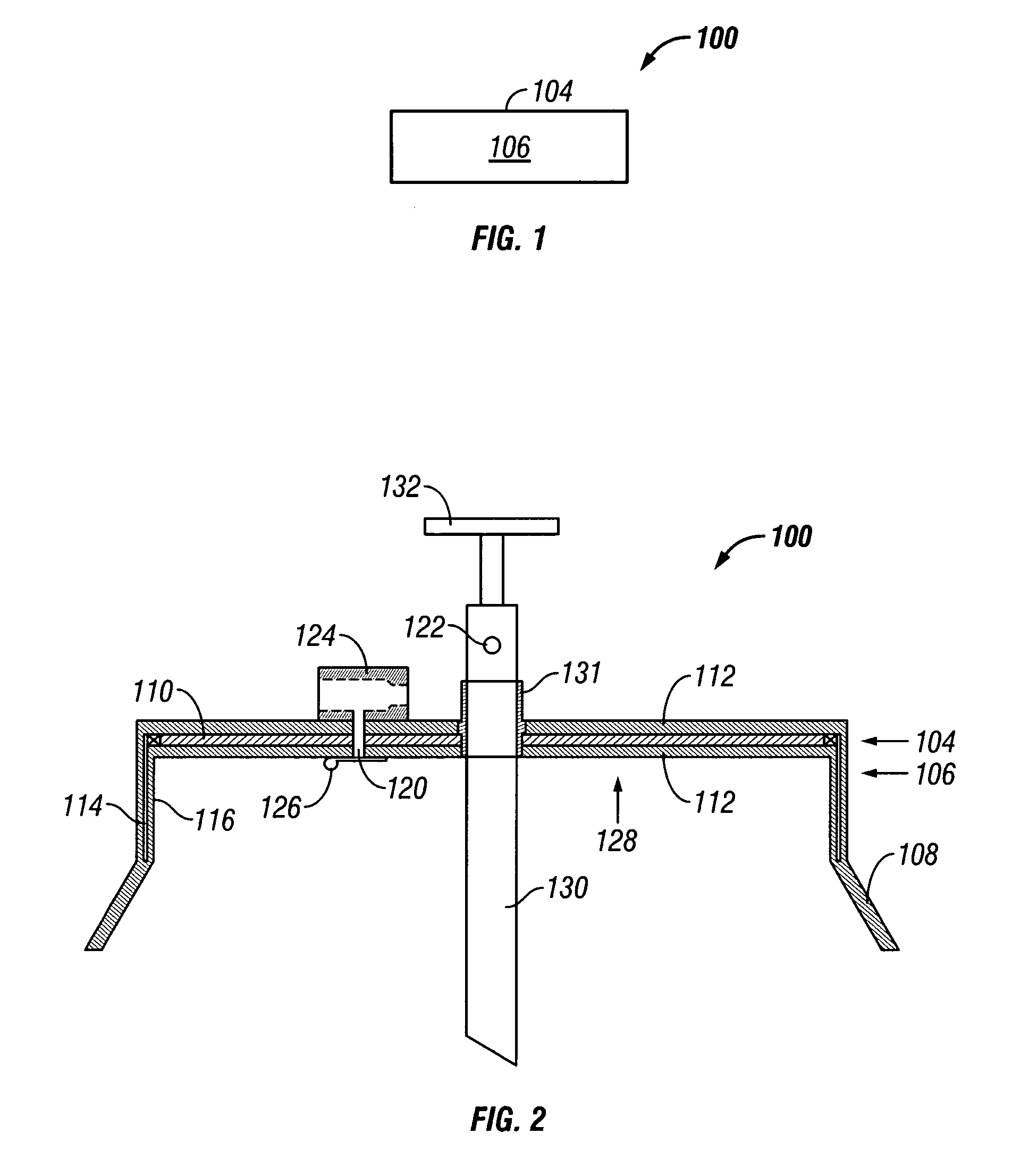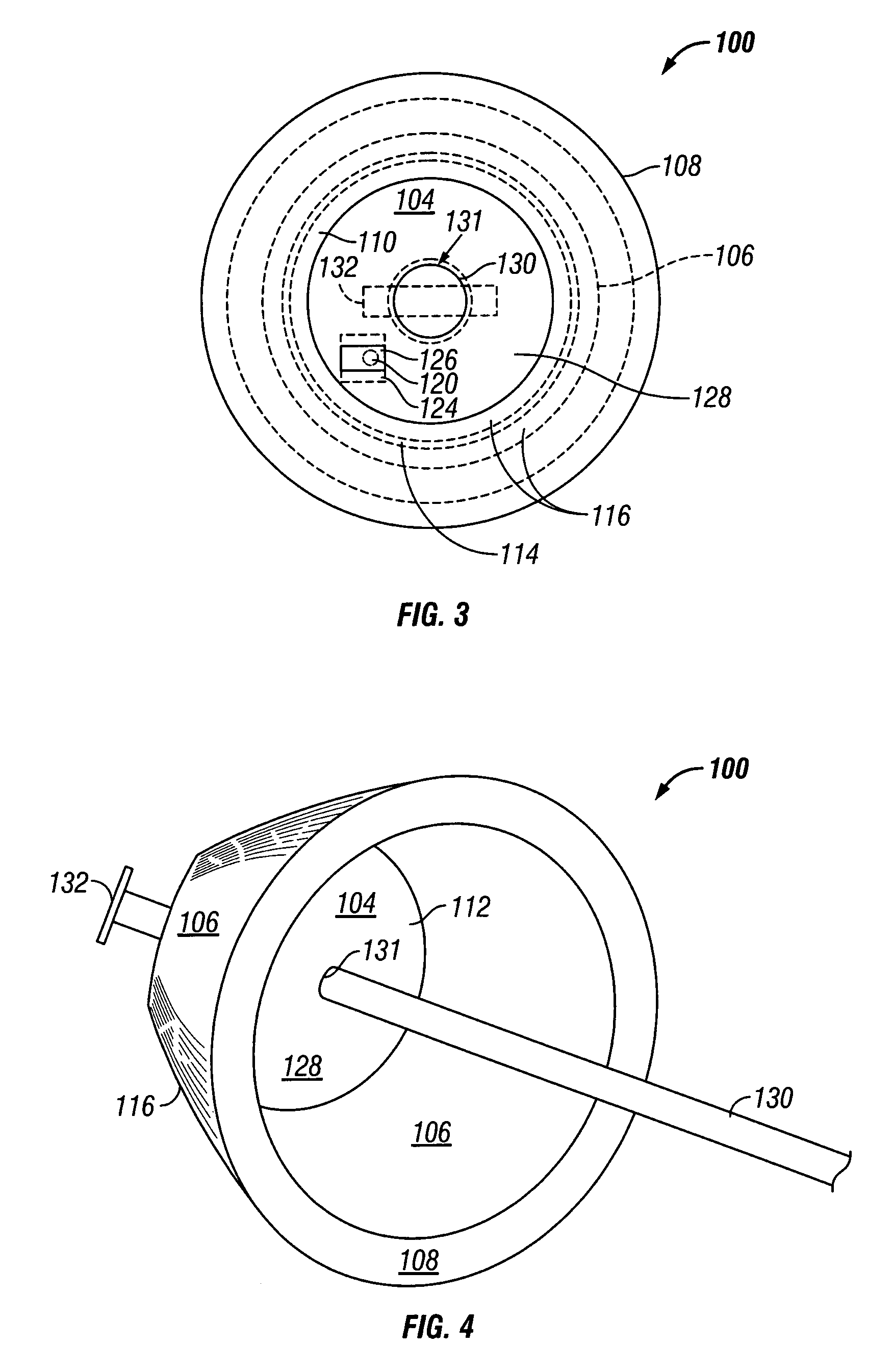Subsea protective cap
a protective cap and subsea technology, applied in the field of subsea environment, can solve the problems of subsea wells costing several millions of dollars to drill, affecting the integrity of seals, and exposing the seal pocket on the wellhead, etc., and achieve the effect of improving the protective cap for subsea structures
- Summary
- Abstract
- Description
- Claims
- Application Information
AI Technical Summary
Benefits of technology
Problems solved by technology
Method used
Image
Examples
Embodiment Construction
[0037]FIG. 1 is a side view of a cap 100 of the present invention showing the two elements, a base 104 and a body 106, of the cap 100. The body 106 of the cap 100 is open at the bottom and attached to the base 104 at the top of the body 106. The base 104 can be of any shape (such as round, oval, square, rectangular, irregularly-shaped, etc.) that covers the open upper end of the subsea structure. The base 104 of the preferred embodiment, as shown in FIGS. 1 and 2, is circular. This is meant by way of example and is not meant to limit the scope of the invention.
[0038]FIG. 2 is a sectional side view of another embodiment of the present invention also showing the two elements, the base 104 and the body 106, of the cap 100. An inverted funnel or flanged skirt 108 can be added to expedite the installation of the cap 100 onto the structure to be protected. The base 104 of the cap 100 in this embodiment is a circular plate-like structure, which forms the bottom of an inverted bowl shape wh...
PUM
 Login to View More
Login to View More Abstract
Description
Claims
Application Information
 Login to View More
Login to View More - R&D
- Intellectual Property
- Life Sciences
- Materials
- Tech Scout
- Unparalleled Data Quality
- Higher Quality Content
- 60% Fewer Hallucinations
Browse by: Latest US Patents, China's latest patents, Technical Efficacy Thesaurus, Application Domain, Technology Topic, Popular Technical Reports.
© 2025 PatSnap. All rights reserved.Legal|Privacy policy|Modern Slavery Act Transparency Statement|Sitemap|About US| Contact US: help@patsnap.com



